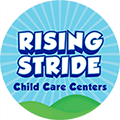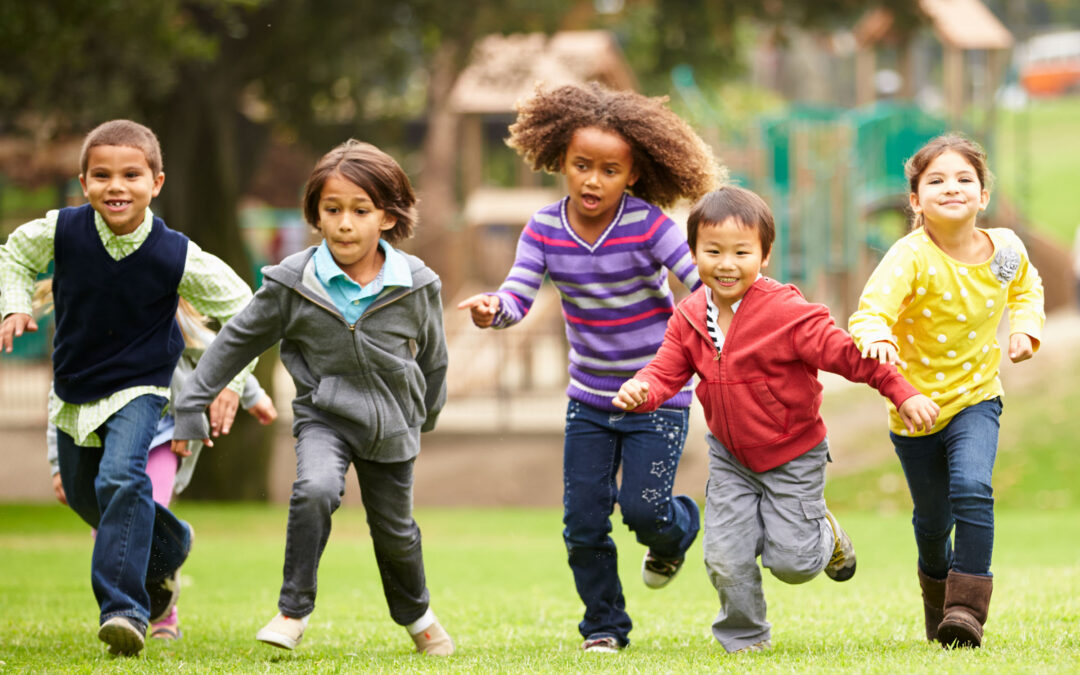Preschoolers should be physically active throughout the day for holistic growth and development. Therefore, starting early is essential to helping them build a strong foundation for an active lifestyle. Physical activities lower the risk of developing diseases like childhood obesity, improve cardiovascular fitness and weight management, and help with depression and anxiety management.
Children are naturally active. There are plenty of age-appropriate activities, such as hide-and-seek, dancing, or musical chairs, that are simple to incorporate into a preschool classroom.
While offering structured playtime is essential, it is also beneficial to allow time for unstructured physical play to keep your children active. Here is a complete guide on the benefits of physical activities for preschoolers and indoor and outdoor activities to consider at your center.
Why is physical activity important for child development?
Regular physical activity keeps children active, builds strong bones and muscles, and reduces the risk of life-threatening diseases later in life, such as heart disease and obesity. Below we go into more detail on the benefits of physical activity.
Promotes physical health
Physical activity is integral to children’s physical growth and development. Exercise stimulates the secretion of growth hormones in the brain, which are responsible for children’s height, muscle growth, and bone length.
Regular physical activity also improves children’s fitness levels by strengthening their muscles, boosting endurance, and improving flexibility. Children can reach key physical development milestones like being able to throw and catch a ball or hop on one foot.
Develops motor skills
Motor skills involve muscle movement and coordination. Fine and gross motor skills are the two types of motor skills children should develop from an early age. Children require motor skills to perform tasks like writing, eating, and dressing. Physical activity improves children’s motor skills by boosting skeletal muscle strength and endurance.
Maintains a healthy weight
According to the Centers for Disease Control and Prevention (CDC), childhood obesity is common among children affecting at least 12.7% of preschoolers. The right amount of physical activity is crucial for weight management as the body burns fat and calories, converting them to energy for various activities. This significantly aids weight management and prevents childhood obesity and other lifestyle diseases.
Improves cardiovascular health
The cardiovascular system comprises the heart and blood vessels like arteries, veins, and capillaries. Poor cardiovascular health can lead to cardiovascular diseases affecting the heart and blood vessels, including coronary heart disease, heart valve problems, and heart failure.
The good news is that you can protect children from developing cardiovascular diseases through physical activity. A key benefit of physical activity is that it enhances the muscles’ ability to get oxygen from the blood, so the heart doesn’t overwork to pump blood to the muscles. Exercising also reduces stress hormones, which burden the heart more.
Aids cognitive development
In addition to keeping your heart, bones, and muscles healthy, physical activity also boosts brain growth and aids cognitive development. This means that physical activity can help with things like memory function and how you think, learn, and problem-solve.
Improves mental health
Physical activity is good for children’s mental health. Being active can help improve your mood, concentration, and attention, and is associated with less anxiety and depression.
Fosters social-emotional skills
Physical activities, like playing sports, can boost a child’s self-esteem and encourage social-emotional skills development. Team sports can teach children how to cooperate and interact with others towards a common goal and foster a sense of accomplishment.
CDC exercise recommendations
The Centers for Disease Control and Prevention (CDC) recommends different levels of physical activity depending on a child’s age. In general, children ages 3-5 should be physically active throughout the day for their growth and development. Therefore, teachers and families are advised to promote regular physical activities for children in this age group. Below are more exercise recommendation guidelines for children.
Infants: 0-1 year
Babies need at least 30+ minutes of interactive play, including tummy time, throughout the day. Tummy time, when a baby spends time awake on their stomach, is one of a baby’s first exercises and can begin as a newborn. This is vital to strengthening the neck, back, and head muscles and promotes visual, motor, and sensory development.
Toddlers: 1-2 years
Toddlers should be physically active throughout the day for at least three hours. Physical activity for this age group can include neighborhood walks or free play outside.
Preschoolers: 3-5 years
Preschoolers also need to be physically active throughout the day for at least three hours including one hour of moderate to vigorous activity. Things like jumping, running, walking, swimming, skipping, cycling, ball games, and dancing are excellent indoor and outdoor physical activities for preschoolers.
Indoor physical activities for 3-5 year-olds
There are plenty of indoor physical activities for preschoolers. Here are some you can consider at your center.
Musical chairs
This classic children’s game is easy to play and will get your children moving. Arrange chairs in two rows back to back, with one chair less than the number of players. Turn some music on and have the children walk around the chairs. When the music stops, each child will race to sit on a chair. The child left without a chair will be out of the game. Remove one chair after every round until you are left with one chair and two participants. The last child to sit on the remaining chair wins. You can also play a non-competitive version of this game by having enough chairs for all children.
Dance extravaganza
Dancing is one of the best indoor physical activities for preschoolers. You only need to create room for dancing and have music on your phone, computer, or radio. Play a familiar danceable tune or song that children like and invite children to the dance floor. You can also use music and movement activities to promote physical activity.
Balloon volleyball
This activity follows the same concept as volleyball, but uses balloons instead of a real ball. Put up a piece of string or yarn across the room at approximately head height. Divide the children into two groups and help them hit the balloons over the string to the other team without it touching the ground.
Hula hooping
Hula hooping is an excellent way to promote physical activity and the only piece of equipment needed is a hula hoop. Instruct children to step into the hula hoop, bring it up to their waist level, and ask them to move their waist in a circular motion to keep it spinning and balanced. You can also have your children try spinning the hoops on their arms or simply roll the hoops back and forth to one another.
Follow the leader
This is a great activity that will teach children the importance of following rules and taking turns. The movement in this game will also help develop gross motor skills. Identify a leader and ask the rest of the children to follow the leader and perform the same movement all at the same time. Take turns switching who gets to be the leader.
Don’t let the balloon drop
The goal of this game is to keep the balloon in the air and not let it touch the ground. Give each child a balloon and have them toss and hit it upwards to try to keep it in the air. Whoever drops their balloon should sit down. The last child standing with their balloon in the air is the winner. You can also provide one balloon and make it a group activity by asking children to hit it in the air so it doesn’t touch the ground.
Outdoor physical activities for 3-5 year-olds
When the weather permits, there are endless possibilities for outdoor physical activities. Below are some you can consider:
Kick the ball
Learning to kick a ball builds children’s eye-and-foot coordination and increases their focus and attention as they kick the ball into the goal. For this activity, you’ll need a soccer ball and a goal. You can make a makeshift goal using a big empty box or laundry basket. Allow the children to kick the ball back and forth, and the aim should be to kick the ball into the goal.
Sack race
Playing the sack race is a great aerobic exercise that will strengthen children’s gross motor skills and hand-eye coordination. Give each participant a sack that fits their size and help them to put their feet inside. The rule is that at least one hand should be holding the sack at any time. Let them hop to the finish line, and the child that gets there first wins.
Hide-and-seek
Hide-and-seek fosters problem-solving skills and self-control (by learning to remain quiet while hiding), among other benefits. Children love this game, and the best part is that you don’t need special equipment or materials for this physical activity. Choose one child to be the “seeker”. Have them close their eyes and count to 10 while the other children hide. Once the seeker has finished counting, they can start looking for the other players until all are found.
Keep children active with physical activities
Preschoolers need plenty of physical activity throughout the day for their growth and development. Physical activity helps support overall fitness, motor skills development, and cognitive development. As an educator it’s important to promote an active lifestyle by incorporating plenty of opportunities for children to get up and move throughout each day.

